28
2019Madagascar
AN ISLAND FULL OF SURPRISES
Usually all it takes is one photo. I see it, and my mind is made up, I want to go there. Madagascar has been on my mind for a while, and as I was told to go there rather sooner than later, well there’s no better time than right now. So we went on a photo tour with Oryx Photography, with photographer Dale Morris and our Malagasy guide Nono Tianamalala. Between them these two guys made just about anything possible, and this trip one of my best photo holidays ever.
Madagascar is in trouble. This island, the world’s 4th largest, lies only 400km off the Mozambique coast. Because of its isolation it is home to some very different, but spectacular, plant- and wildlife. Most animals here are not found anywhere else in the world ! Unfortunately most of this remarkable wildlife is on todays IUCN-list, marked as endangered or even critically endangered. Deforestation is the main reason, sadly today only 12% of the forests of Madagascar remain. There are simply too many people and not enough forest left for all these beautiful creatures to live in. Lets hope and pray that conservation and tourism will show the world how spectacular this island and its inhabitants are, and help these amazing species survive.
ANTANARIVO AND THE LEMUR PARK
It is not really far to the Lemur Park, but due to lots of traffic and even more people, it takes us ages. Lots of people, one little shop beside the next, street vendors, ox wagons (being pulled by men not oxen) and people in their Sundays best on their way to church. Then, suddenly it opens up and smack in the middle of this busy 3 million people city we drive along rice fields. Very strange to find these here, but beautifully green and a welcoming change to all the buildings. People wash their clothes in the river, lie them out to dry on any flat surface available, others sit and chat, right beside the road or work in the rice fields. There are cool roadside scenes around every corner.
Finally we get to the Lemur Park. Now lemurs are simply adoring. They are something of a mix between a little monkey and a koala, all furry and cuddly (but please don’t touch), with long bushy tails and big eyes, so very cute ! And the good thing is… there are 36 species ! A guide walks us through the 5 hectare reserve. The lemurs and sifakas are fed, so they are quite used to people. That is very good, we need some practice, it is photographically quite a challenge to get it right. Bad backgrounds, much to bright, dappled light between the trees, sifakas with white fur but extremely black faces, chameleons you hardly see because they are so well camouflaged, and naturally they always move to the wrong side of the tree. Today we see crowned and Coquerel’s sifaka, and black and white ruffed and ringtailed lemurs, that is 4 out of 36 already.
MORONDAVA AND THE BAOBABS
As we leave the plane in Morondava the heat hits you like a wet cloak, this is the tropics ! Jürg starts sweating instantly, I am seriously afraid he will at some point melt away completely the way this is proceeding. The hotel is about 20min away, the town is like a Caribbean town, colorful, loud, there are lots of little yellow tuk tuks and even more rickshas here, the poor guys are pedaling like mad, trying to avoid being run over by cars and busses. Added to that the usual shops and street vendors, people all over the place and lots of palm trees for that tropical seaside feeling. I like it here. Our hotel, the Pallisandre Cote Quest, is right on the beach, a lovely breeze is blowing. We are facing the Madagascar Channel, canoes go by and every now and then a dhow sails north. Good sailing wind here !
Late afternoon we head out to the Baobab Alley. It is a 45min ride, the last 15min on a very bad dirt road. It is like a road in a game reserve which hasn’t been serviced for years, very eroded and bumpy. We do our best to find great angles, better compositions, in the end I like the shot from the very first meters of the road the best. A person, bus, bike or ox wagon in the shot is also good for reference, to see just how majestically tall these trees are.
THE KIRINDY FOREST
We leave at 04:00 am for the sunrise at the Baobabs which is lovely. The sun rises at a 90° angle to the alley so we shoot some other baobabs, not the road itself, but there are quite a few clouds and lovely light. From there to Kirindy where it will be even hotter, and no air-conditioning. This is going to be interesting….
The road is the same as the one to the baobabs, then continues on. It is the main road from Morondava to Tsinghy, but a Namibia dirt road is like a 5-star highway compared to this one. It is almost like a rollercoaster. By some miracle both Jürg and Nono fall asleep, they almost fall out of their seats through all the rocking, but they stay asleep, I have no clue how they do it !
The 60km trip takes us about 2hrs which is very good timing. The Relais du Kirindy is an oasis in a very hot (deciduous) forest, the occasional baobab rises above everything else around it. It is close to 40°C, or at least feels like it, it is very hot and humid. After a lovely lunch I spend my time in and out of the pool, which is lukewarm but liquid, until am all wrinkled, but only moderately cooler.
At 4pm we leave for our walk. Boy it still is hot ! Just brushing your teeth you break out in a sweat. We drive a short distance until we reach the ranger station. Chris is our guide. About 10m after leaving the car we see our first gecko. Only as we almost stand on it, do we find another one. Next we find orange tailed sportive lemurs hiding in a hollow tree trunk, every now and then a cuddly, furry face with enormous eyes shows up. A beautiful snake is our next motive, we lie on the sand and let it creep up to us trying to get the perfect angle. Don’t worry it is not poisonous at all, or that is what they tell us, it doesn’t seem bothered by our presence, nor aggressive, so we believe what our guide tells us.
Our night walk is cool and finally it is a little less hot, but still steamy, I don’t believe it ever cools down here. We find a mouse lemur, boy it is so cute, it is almost like a little mouse, just one with very big eyes and tiny hands almost like human hands. Another one, a fork faced lemur, high up in a tree. They all seem to like that, the higher the better, and we all get stiff necks and lame arms. After dinner straight off to bed, it has been a long day. With two fans on it is almost bearable to sleep. That was until 22:30 when they turned the generator off, and the solar power didn’t hit in as it should have. Don’t move and don’t dare touch me, shit it is hot here.
BACK TO THE BEACH AND THE FISHERMEN
We leave before sunrise and head for the forest. Our porters are with us again, thank God for them, imagine crawling through the shrubs in 40°C with those 14 kilos on your back. Soon we find a family group of red fronted lemurs, they are very used to people and just sit and stare back at us. The fun starts when Dale makes us get out our wide angles with flash and we hold those in their faces, that creates some cool pics. The smart little fellows soon realize nothing is going to happen and don’t even close their eyes anymore. After that it is Verreaux Sifaka, very pretty white ones. They decide to play the high up the tree game with us, and soon reach the top branches and are out of sight. No problem, it is bloody hot and breakfast time anyway.
After breakfast we start the journey to the coast. Jack does his new personal best, we only need 1hr45min. Later in the afternoon we leave for the fishing village. We are set across in two outrigger canoes, they are very narrow but incredibly stable. The two poor guys have to paddle hard against the incoming tide, having Jürg, Nono and me in the canoe. We walk through the village and do some cultural (or better said people) photography, get invited by the one guy, they will get us coconuts. As we sit and drink half the kids in the town entertain us, all wanting their photo taken. Sunset at the beach which wasn’t all that spectacular but very windy, we all got a free sand peeling. Back by canoe again, the incoming tide now helps them, so we reach the other shore much too fast for my liking.
A SAILING TRIP
We meet at 6am at the beach and board two boats. With the wind in our backs it is beautiful sailing. We glide along, all very peaceful and quiet, a few fishermen pass us. Then we get out from behind the sandbank and already the waves pick up. Better put the camera in the bag. As the one guy asks me to put his cellphone in the bag I get a bit suspicious. Soon Dale gives the sign to head back, every wave swaps over the bow and fills the boat, one of the guys is constantly scooping out water, just pray the dry bag really is dry ! The skipper tells us this is the wrong wind, the good wind comes from the north, it is now coming from the south. A few days later we will find out what it was with these funny winds…Our rather adventurous outing ends well and after breakfast we head into town again and go to the market.
The town and the market are hot and crowded, this mornings wind has died down and we directly head for the shady part, also because of the light which is by now rather harsh. This is fun, it is narrow and smelly and everything is full of flies, but interesting it is ! Late afternoon we fly back to Tana and our base there, the very nice hotel close to the airport called Relais des Plateaux.
THE WORST ROAD EVER
After an easy morning at the hotel we fly to Fort Dauphin which takes about 1hr45min. As we arrive it rains lightly and is very overcast. The one guy at Kirindy warned us, Berenty was their favorite, but the road to the baobabs was very nice compared to this one. At first we said, this guy is a sissy, not used to anything, but then the driver said this was the good part… and then it went bad. We honestly couldn’t drive straight for 50m at a stretch, no make that 10m. Generally speaking, one third was potholes, one third was missing and the other third was more or less linking the potholes.
But the scenery was great, lush fields, cloud covered hills and mountains in the background, colorful villages, people all over the place, kiddies waving as we pass by. There are motorbikes and even bicycles overtaking us, that is how slow we are. We need 3hrs45min for an 80km trip, on a road that was built in the1950’s, and never repaired since the 1970’s. You have to earn it, but once you get there you forget the road. The Berenty Nature Reserve is sensational !
DANCING LEMURS AND AN ISSUE
After a very nice coffee at 5am, which was desperately needed, we started walking. Okay, to be totally honest, we are doing it the luxury way. Again we each have a porter, which, in this warm and extremely humid weather, is an absolute blessing. Ours is a sweet guy called Mbeku, he runs and smiles and is always at our side. From now on he greets us as soon as we open the rooms door, eager to carry the rather heavy backpack, even the short distance to the restaurant where we meet. We pay him 30’000 AR per day, which is just about 10 USD, about 3x as much as a normal days salary, no wonder he’s smiling.
The reserve is right around camp, we do not have to go far. We soon see brown and ring-tailed lemurs, that is not counting the half tame scruffy ones in camp that steal the food off the table. Verreaux Sifaka, sportive lemurs, we photograph a spiders web, a gorgeous chameleon which Dale and Olivier (our guide here) shake down from a tiny tree as he tries to run off. For revenge it bites Dale in the hand, but we get great shots as he holds it out on the end of a medium sized branch about the size of a broomstick. The sekadas by the way make a hell of a noise, it is like a very high pitched chainsaw going on non stop, it’s deafening
After lunch we meet again at 4:30 this time to chase the sifaka, it is the white Coquerel’s sifaka which, because of the shape of their hands and feet can’t move like we do, only sideways. So they can masterfully jump from tree to tree, but hop sideways as soon as they are on the ground. This gives them the nickname Dancing Sifaka. There are various groups leaving the reserve for some trees just outside it, and these all have to come back a while later. So we walk, run or are driven from one spot to the next, get great photo opportunities, and pray they turn out as focussed super shots.
As the light leaves us we go back to camp. Dinner at 7pm when Dale tells us there is an issue….
A cyclone called Belma (same thing as a hurricane just in a different ocean) is building up, and Madagascar is right in its path. We will decide tomorrow afternoon if we leave for Port Dauphin tomorrow or the day after, as planned. You really don’t want to be stuck here, where there is no phone, internet, airport or transport when that cyclone hits, and we really don’t want to be on „that road“ when it rains.
SPINY FOREST AND MORE LEMURS
Again a coffee at 5am and then get into the cars, we drive 5min to the spiny forest, which from the outside looks in-penetrable, but there is a path leading in. All around us are the sisal plantations which, to be honest, look quite lovely as well. In here it is more like the realistic situation, we are rather spoilt after all our super shootings with half tame (or habituated) lemurs around the restaurant. Still, the forest is absolutely breathtaking. There are the sisals, and prickly pears all around, inside there are all sorts of weirdly shaped cactus varieties. Some are like big bulging pots, others like the big fat ones with two arms you would see in Mexico, then there’s the Octopus with many many arms and straight towering ones that grow up to 10m high. This is totally different from any forest I have ever seen.
After breakfast we walk again, we are cheating just a little bit…bringing a banana to get the little mouse lemur to come out of its hiding place. It did come out, and after a short while noticed the big funny apes (meaning us) were totally harmless and bringing goodies which he relished !
From there to the fruit bat colony. As we enter the forest there are lots of squeaks and squeals, and big flapping wings fill the air, a constant swooshing is over us. We find an open spot and try to get them backlit. It actually works. After lunch we have to leave this wonderful place and the cute lemurs, especially Tschernobil, the very ragged, very tame one with the baby on its back, which we regularly had to chase off the table. The bad road again, but it is not as bad as I remembered, you get used to bumpy roads here.
FLYING TOWARDS A HURRICANE
Easy, we leave at 6:30am for the botanical garden which is not too far away. They have a bit of wildlife, ring-tailed and brown lemurs which live on little islands, but nothing too spectacular.
The good thing is, this garden is totally exotic and green, everything is huge, hardly a plant is under 5m tall, everything is mixed, intertwined and in every gap there is another crazy plant. After a few cute lemurs we spend ages photographing a dragonfly which stays incredibly still at exactly one spot, so we all give it a go. This animal has a head as small as 3-4mm, but once zoomed in you see the colors, blue black, yellow, green, so cool ! Flesh-eating plants are next. Once we put a black backpack behind them, they make for stunning art pictures.
It is a bit of a funny feeling, knowing you are flying in the direction of a hurricane. We land and the skies are pitch black, we barely make it to the car before the heavens open, boy it rains ! Glad we didn’t land 10min later, the pilot must be very relieved as well, this is one hell of a storm front. At the hotel we wait in the lobby until the rains cease a bit, then rush for the room. During the whole evening it intermittently pours or rains mildly. Hope the roads don’t get washed away !
CHAMELEONS AND THE RAINFOREST
After the downpour last evening and monsoon-like rains during the night, the morning is pleasantly cool at 18°C. The locals are freezing and are wearing thick jackets sweaters and beanies. We quite like it. It soon starts to heat up, when we leave at 9am it is already close to 25°C, the afternoon we get close to 35°C, we are of course leaving the high plateau and moving down towards sea level which partly explains the rise in temperature. The first 35km to get out of Tana take us 1hr30min, and that was the shortcut !
Now it’s time for this afternoons highlight, the reptile park as Dale calls it. This is my favorite shoot so far ! These animals are so beautiful, they come in just about every color, size and shape. The biggest is about 40cm and ugly as a dragon, the smallest about 5cm and colorful like a child’s mad painting. There are red, green and yellow ones, with spikes and split noses, curly tails and cute fingers, I love every minute of it. Then we have to leave the chameleons, but we don’t go far, next are the frogs. First tiny bright orange ones which never sit still, then the tomato frog, guess why it is called that. It really does look like an overripe tomato, it doesn’t really sit still either, but we manage.
From there not far to Andasibe and the Mantadia Rainforest near the tiny town of Perinet. Our home for the next four days is the Vakona Forest Lodge. The rooms are basic but big enough, the bed oversized, it can easily hold a family of four, the bathroom is huge and the dining area and bar are nice.
THE SEARCH FOR BABAKOTA
The nights are very cool here and we sleep well with just the windows opened. At 7:30 we meet our porters at the entrance to the Analamazoatra Park, the sister park to Andasibe- Mantadia National Park. Our porter actually thinks it is cold and has a jacket on, zipper closed way up to his chin. We on the other hand, are dripping with sweat soon after the sun comes out. It is maybe only 25°C but it is very, very humid. Soon after we enter the park we see the Bamboo Lemurs, to be honest we only see something brown and furry way up in the trees, so that doesn’t really count. But soon after that we hear and see what we are looking for, Babakota as the locals say, our first Indri. They are quite large and make a sound somewhere between a whale song and howling wolf, very loud and rather beautiful. They are about the only lemur type that don’t have a tail, which makes it easier for us to get the whole animal in the picture. Well, the no tail part was correct, but they tend to spend their time high up in the trees, and as it is with trees and sunlight, the whole scene is dappled with brighter and darker patches. Not so easy after all.
We stay put as our guide Luke runs off towards the Indri calls trying to locate them and photograph little green tree lizards whilst waiting. He comes back and we follow him down a narrow, steep, slippery path through the jungle which is covered in roots, then up again, there they are, still way up but we give it our best. By now nobody has a dry thread on their bodies, the porter, with our rather heavy backpack, still has his jacket zipped up all the way, it is cold…. ! There is a constant low rumble of thunder around us, once big fat drops hit the canopy above us, but they hardly reach the ground and soon stop. Lucky us.
After lunch we leave once again, this time we are not so lucky, is it raining lightly and our porter now also wears a beanie (just to describe the graveness of the situation), it is now very cold ! We walk the orchid gardens, which bloom in the rainy season, which has not yet started, so nothing there. Even the house chameleon, isn’t at his favorite tree. We hike in a forest which is almost as dark as on a night walk and soon decide this is not it. If we have to look up raindrops will cover our lenses, and it is way to dark to take photos with an ISO under 6400, which will only get us soft pictures. We head back to the lodge and spend time editing whilst enjoying a G&T. Oh yes, we did some orchid shots, but of the plant in a pot, at the lodge entrance, with 2 spotlight and a dark jacket as background they look amazing.
THE PRIMARY FOREST AT MANTADIA
Our porters are already waiting for us, in t-shirt this time, that must be a good sign, it is finally warming up…. He’s happy and we are now sure we will melt away at some point. Mantadia here we come. The worst road in the world now has serious competition! Well no, not really, because this is a seldom used dirt road leading into the rainforest, the other one was a main highway connecting Port Dauphin and the capital city Tana. Mora Mora as they say here, we are today moving forward at 10km/h, meaning the 15km take us 1hr30min. Actually a bit more, we do two photostops, one for a chameleon and one for the giraffe necked weevil, an insect of about 1cm which lives on one specific plant. It has a bright red body and an enormously long thin neck, almost like a giraffe, hence its name.
Finally we enter the forest. After the dry or deciduous forest at Kirindy, the spiny forest at Berenty, we are now in the primary rainforest, meaning nothing here has been touched by man. In comparison to the secondary forest we were in yesterday, here there is less undergrowth and the trees are much bigger, reaching 40-50m into the sky.
We see diademed sifakas and black and white ruffed lemurs, the ones that look a bit like Border Collies. The afternoon we spend with little creatures, a centipede, a multicolored frog, a lizard, another little tree frog which has little color but when enlarged looks spectacular ! Then it’s time to leave, the gate closes at 4pm and we have at least an hour to drive. The rumbling thunder gets louder and soon big fat drops hit the windscreen, good thing we are in the car. At 4:15pm we leave the park, exactly on time if you go by Madagascar time, ha ha.
ISLAND SURPRISE
And such an exiting one, the Lemur Islands ! We only had to drive for five minutes, which was good, then were set across by canoe, which was cool, and about two minutes after we arrived the first lemurs came out of the forest to greet us. As we walked on, and we didn’t get far, suddenly a hop and a jump, and a lemur was sitting on my shoulder, this is fun !
On the next island there are diademed sifakas, bamboo sifakas, without bamboo to hide in, and a new one, all orange and black, the red ruffed lemur which is also very cute. We spend ages there, the absolute highlight for me was the one B&W ruffed lemur with twins. These two little fellows kept us entertained for ages, the cutest, fluffiest, funniest, sweetest thing ever.
At 1:30pm we leave for the rainforest, at 2:30 we are back. It pours ! Well its not called a rainforest for no reason. So we have time to pack our bags and camera stuff, download and edit, tomorrow we head to Tana again. The rains don’t seem to stop.
MORE CHAMELEONS
We leave for Moramanga, where we do some more ricksha panning. It is awful harsh and bright but this technique is only mastered through learning by doing, so we all have a go at it. I really liked the name Moramanga, until Nono explained it to me. It all goes back to the slavery times, in Malagasy mora means cheap, and manga is slaves or workers. So this was actually the place to get cheap slaves ! Not so nice anymore…
We head on towards the chameleon place and have a great time there, though the light is, as before, much too harsh, and the backgrounds tend to be overly bright and messy. After the chameleons we do the frogs. We place the little orange ones on a huge and beautiful red flower for a different background, we already did the green leaf last time. Next are the geckos, I even manage to think of setting the spot metering on one in the almost dark ! And already time is up.
Shit, these two weeks have gone by so fast ! I loved it all. This country is so beautiful, colorful and exiting and I just love all the different forests, the spiny cactus one the most, but that is closely followed by the rainforest. That was so special, I really didn’t want to leave there. But all good things must come to an end, and so does this trip. Many thanks go Dale for all the photographic advise on over- and underexposing and spot metering, and to Nono for making sure we always got to the best places with the best drivers and guides around.
I go home with fond and happy memories, and loved every bit of Madagascar, even when things not always went perfectly smooth, because that’s the fun of it all. Who remembers the days everything went smooth, and the nights they got plenty of sleep ? Nobody !
For our favorite photos : go to gallery
copyright photo and text: Astrid Bluemel for bluemelphoto.ch




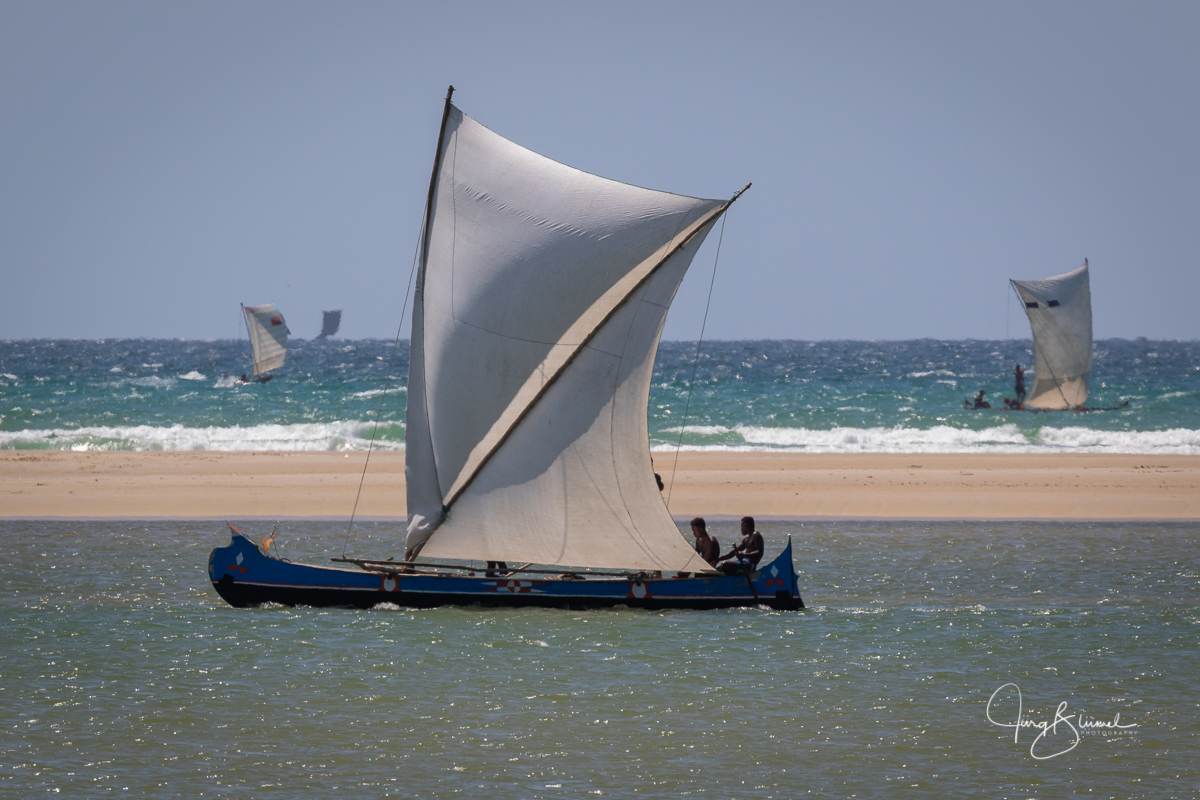
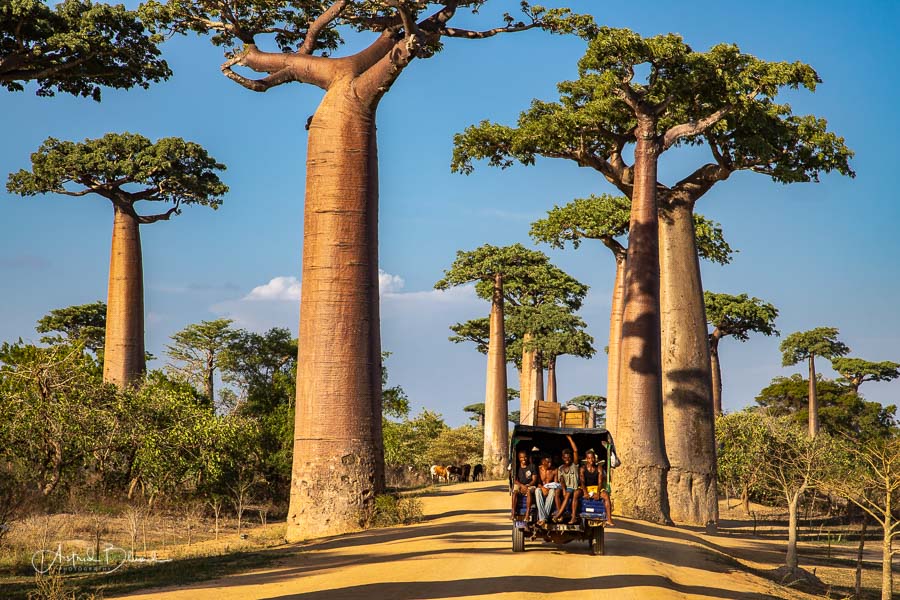







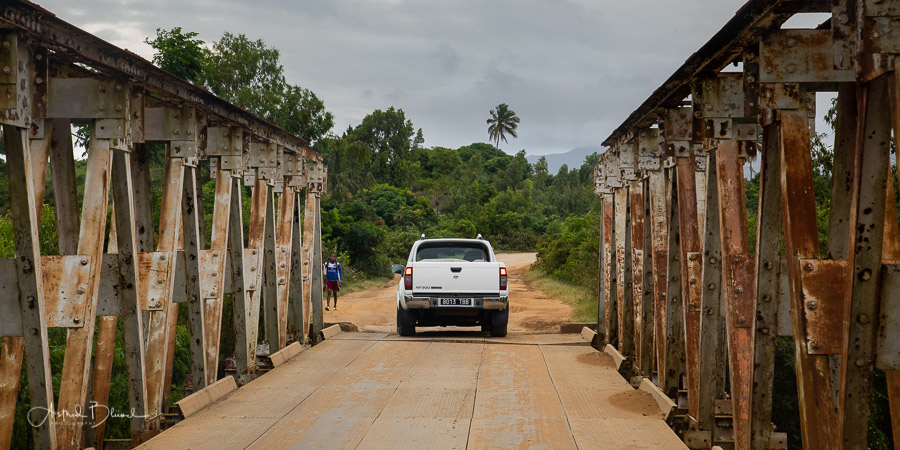











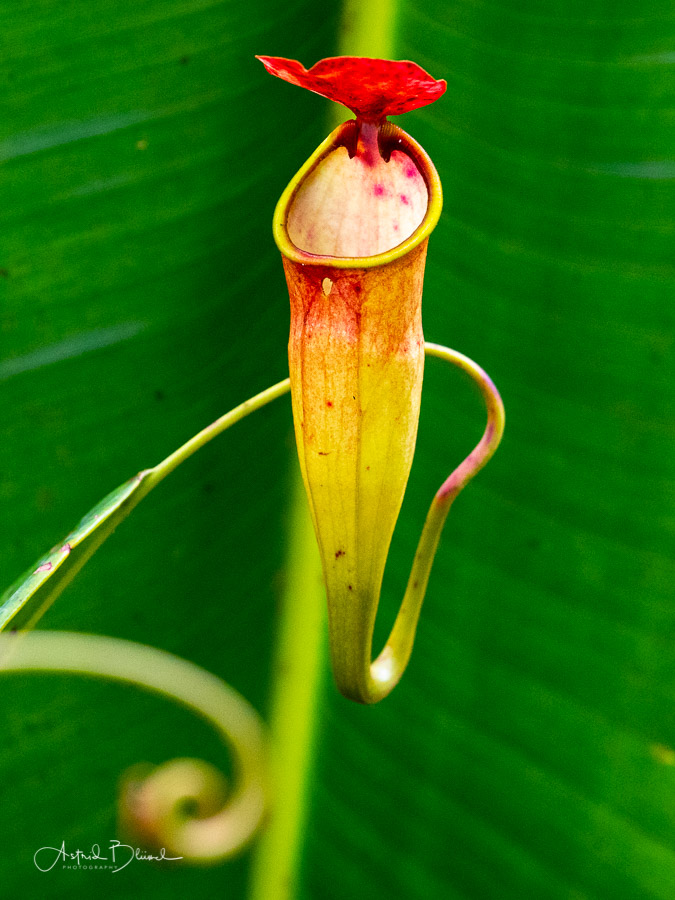

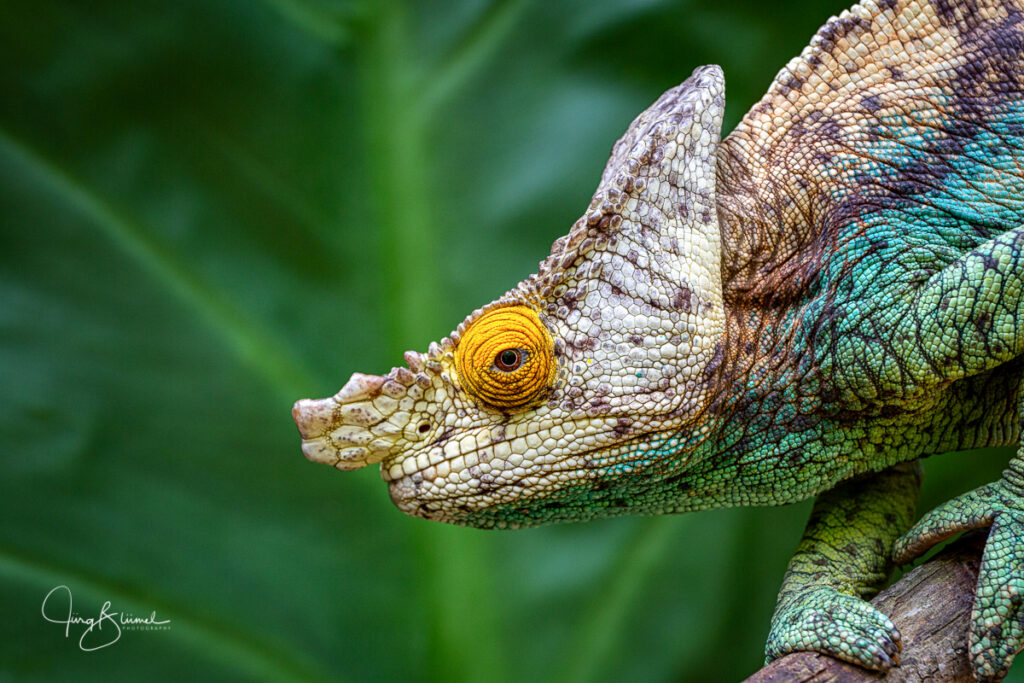

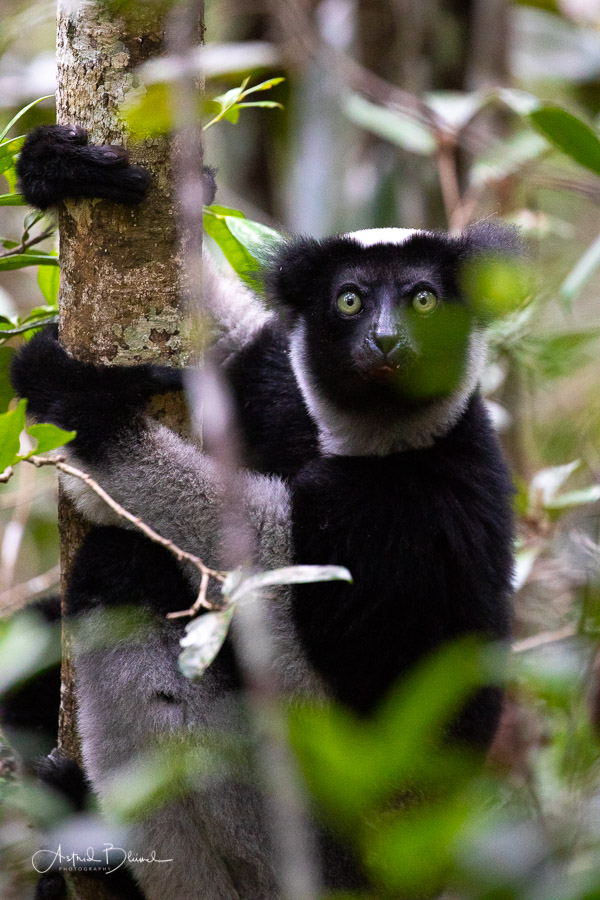
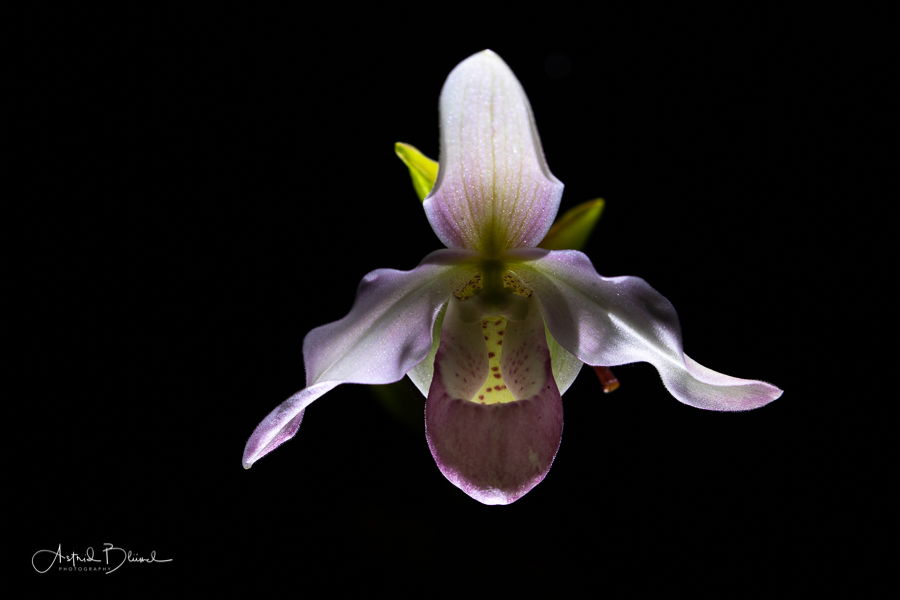

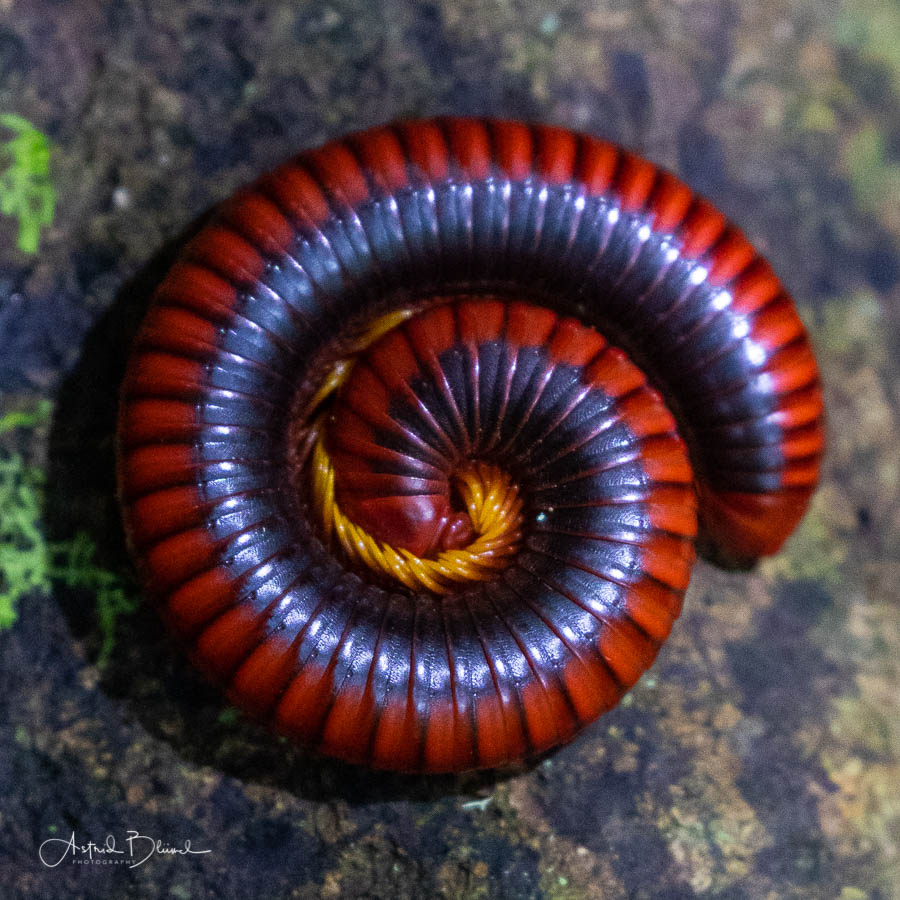


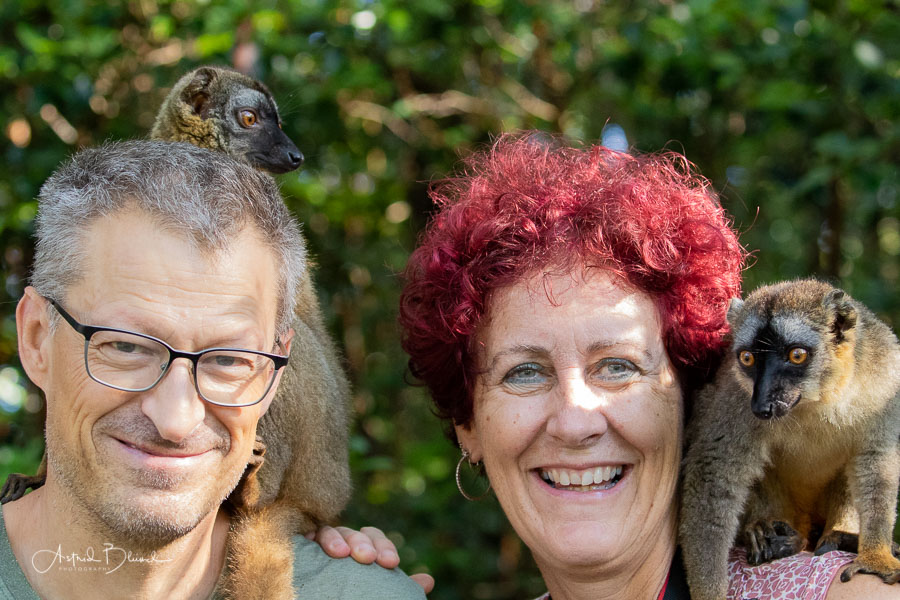



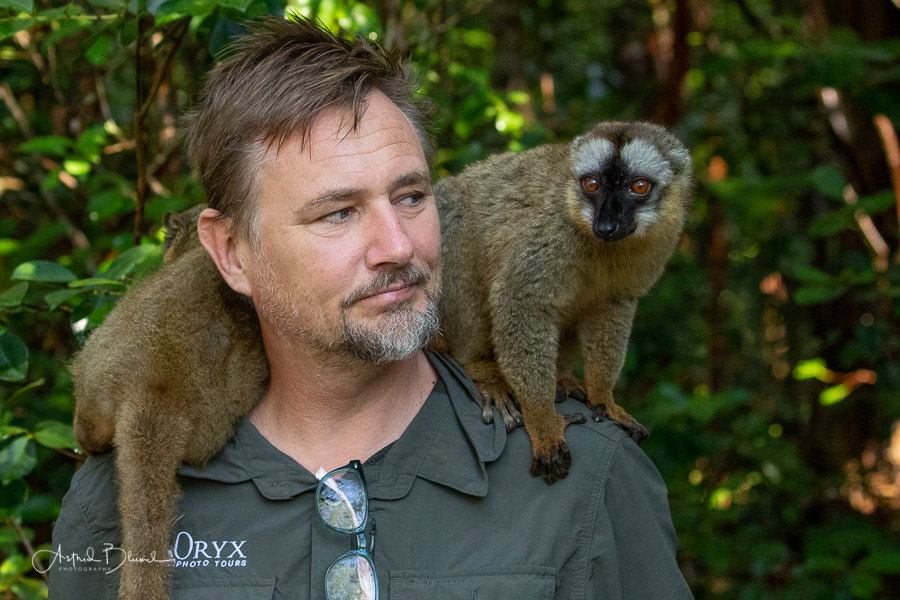
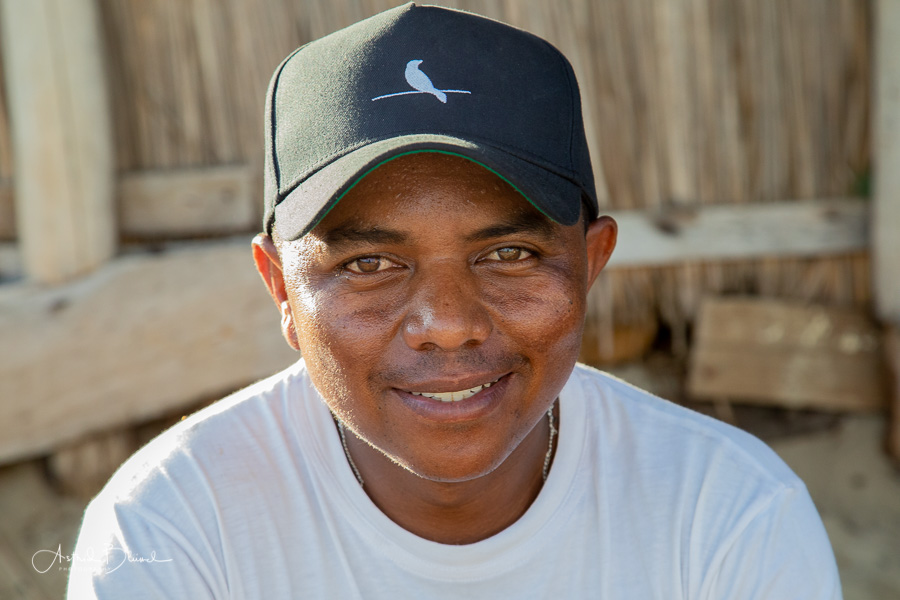
Heidi Bluemel
It’s absolutely out of this world.
The Fotos, amazing, colourful, special, because of the lovely Models and the outrageous beautiful nature.
A big complement too both of you.
I like travelling with you, through all the stories and Fotos
Mum
Juerg
Thanks mum you’r the best